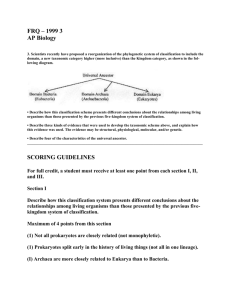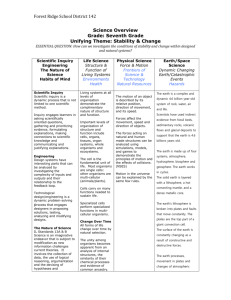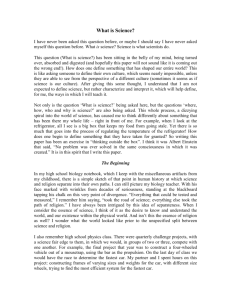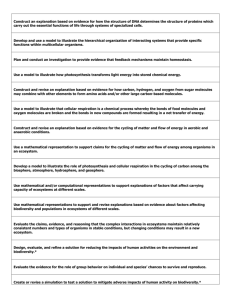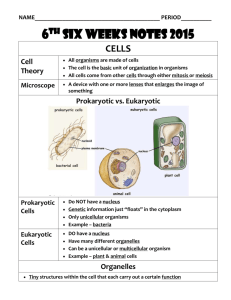Origins of Life
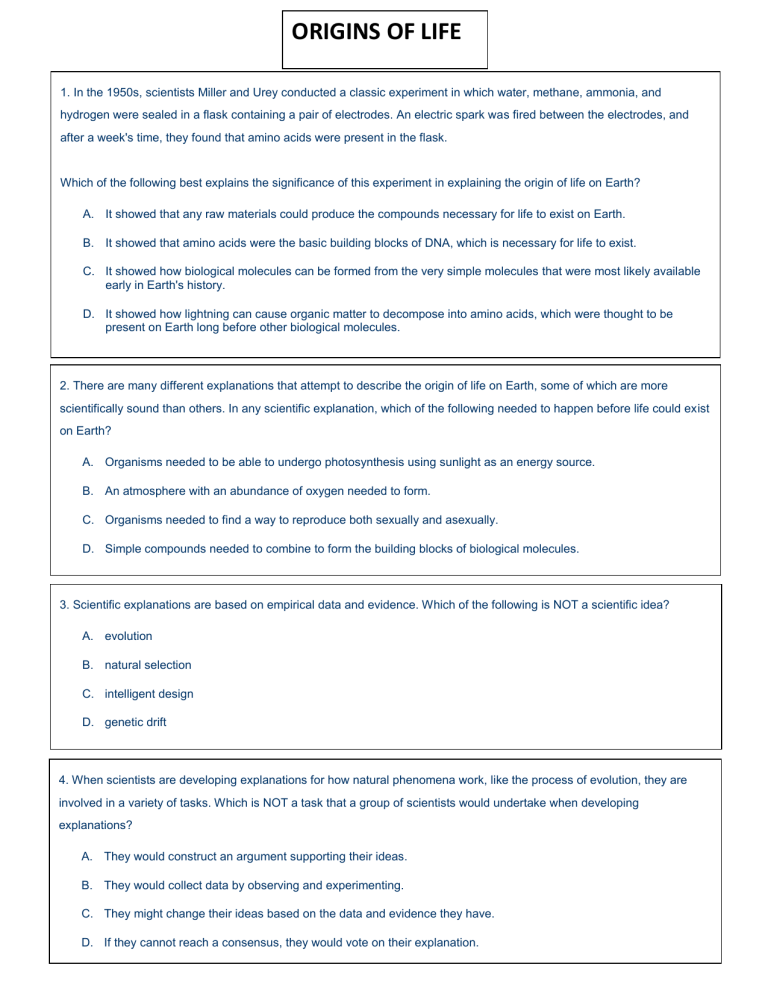
ORIGINS OF LIFE
1. In the 1950s, scientists Miller and Urey conducted a classic experiment in which water, methane, ammonia, and hydrogen were sealed in a flask containing a pair of electrodes. An electric spark was fired between the electrodes, and after a week's time, they found that amino acids were present in the flask.
Which of the following best explains the significance of this experiment in explaining the origin of life on Earth?
A. It showed that any raw materials could produce the compounds necessary for life to exist on Earth.
B. It showed that amino acids were the basic building blocks of DNA, which is necessary for life to exist.
C. It showed how biological molecules can be formed from the very simple molecules that were most likely available early in Earth's history.
D. It showed how lightning can cause organic matter to decompose into amino acids, which were thought to be present on Earth long before other biological molecules.
2. There are many different explanations that attempt to describe the origin of life on Earth, some of which are more scientifically sound than others. In any scientific explanation, which of the following needed to happen before life could exist on Earth?
A. Organisms needed to be able to undergo photosynthesis using sunlight as an energy source.
B. An atmosphere with an abundance of oxygen needed to form.
C. Organisms needed to find a way to reproduce both sexually and asexually.
D. Simple compounds needed to combine to form the building blocks of biological molecules.
3. Scientific explanations are based on empirical data and evidence. Which of the following is NOT a scientific idea?
A. evolution
B. natural selection
C. intelligent design
D. genetic drift
4. When scientists are developing explanations for how natural phenomena work, like the process of evolution, they are involved in a variety of tasks. Which is NOT a task that a group of scientists would undertake when developing explanations?
A. They would construct an argument supporting their ideas.
B. They would collect data by observing and experimenting.
C. They might change their ideas based on the data and evidence they have.
D. If they cannot reach a consensus, they would vote on their explanation.
5. Which of the following was most likely the first type of biological molecule that was formed from the conditions present on
Earth before life came into being?
A. amino acid
B. DNA
C. Prokaryote
D. water
6. In order for the development of life on Earth, a very important transition had to occur. Which of the following would have been an important early step in the evolutionary history of organisms on Earth?
A. Unicellular organisms had to evolve into multicellular organisms.
B. Unicellular organisms had to become extinct.
C. Multicellular organisms had to evolve into less complex unicellular organisms.
D. Multicellular organisms had to become extinct.
7. Intelligent design is a concept that was introduced in order to offer a supernatural explanation for the origin of life. Which of the following best explains why intelligent design is not generally accepted as a scientific explanation for the origin of life on Earth?
A. It is not testable by scientific methods or research.
B. It was not supported by enough people to be included in textbooks.
C. It does not describe the circumstances under which life came into being.
D. It contradicts natural selection, which is accepted by the scientific community.
8. Scientific explanations like the theory of evolution and natural selection help to explain the variety of plant and animal species on Earth. In order for explanations like these to be considered scientific, they must have certain characteristics.
Which set of characteristics below best describes scientific explanations?
A. Scientific explanations are based on popular opinion within the science community and are only supported by recently collected data and evidence.
B. Scientific explanations must be agreed on by all scientists and have at least some supporting evidence.
C. Scientific explanations explain why things happen based on the best guess scientists can make.
D. Scientific explanations are the ones best supported by all the available data and evidence to help understand how something happens.

